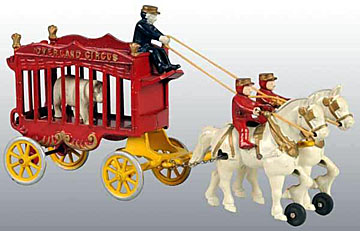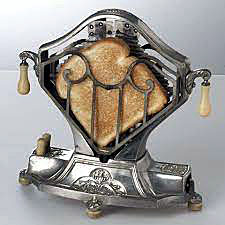
ANSWERS: Yes, I can. While not many people are familiar with this, I recommend dinnerware from the Blair Ceramics of Ozark, Missouri. While often similar in price to its modern day counterpart, the 1950s dinnerware is superior in that it is often hand-painted and decorated. No two pieces are exactly alike

Blair directed his artistic talent toward the production of pottery and was instrumental in the design of Purinton's characteristic handpainted wares. While there, Blair designed several of the most recognizable patterns including Apple which was the most popular while the factory was in operation. He also created the off-round shapes of the dinnerware lines with the Heather Plaid and Normandy Plaid motifs.


Blair Ceramics produced several lines of dinnerware, most with innovative square-shaped plates and platters. Blair frequently voiced objections to round plates and dinnerware while employed by the Purinton Pottery. At his own company, Blair had the opportunity to produce what he considered more pleasing and appropriately shaped dinnerware. These distinctive pieces are also characterized by unique twisted handles and leaf-shaped knobs on the lids of serving pieces.
Blair had all his pieces hand-painted and marked most of them with an underglaze backstamp "Blair decorated by hand" The firm’s most popular pattern was Gay Plaid which it distributed and made continuously during its operation. This design featured horizontal forest green stripes and chartreuse and brown vertical stripes. Also produced were Rick-Rack with yellow stripes and brown zigzag bands; Yellow Plaid, similar to Gay Plaid except the predominant color is yellow; Bamboo, an ornately decorated design with multicolored leaves and bamboo in brown; and Autumn Leaf, consisting of a three deaf pattern in several shades.

Prices for Blair dinnerware are still reasonable. For example. a coffee server sells for approximately $45; a five-piece place setting, $35; a creamer and sugar or 14-inch platter, $20; a stick-handled gravy bowl, $18; and ice-lip jug, $25. Prices for most patterns are approximately the same for comparable pieces.
While dinnerware produced in the 1940s-1950s was out of favor with the public for many years, recently it has been rediscovered by savvy collectors who see a certain charm in the quirky designs.
To read more articles on antiques, please visit the Antiques Articles section of my Web site. And to stay up to the minute on antiques and collectibles, please join the over 30,000 readers by following my free online magazine, #TheAntiquesAlmanac. Learn more about the "Antiques of Christmas" in the 2021 Holiday Edition, online now. And to read daily posts about unique objects from the past and their histories, like the #Antiques and More Collection on Facebook.
































